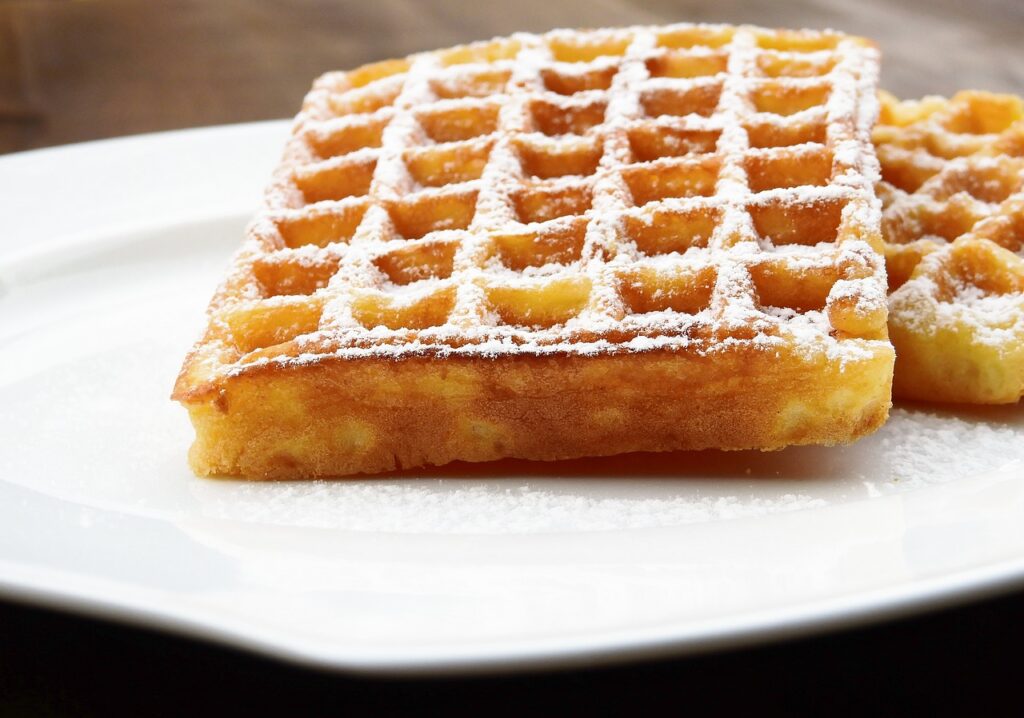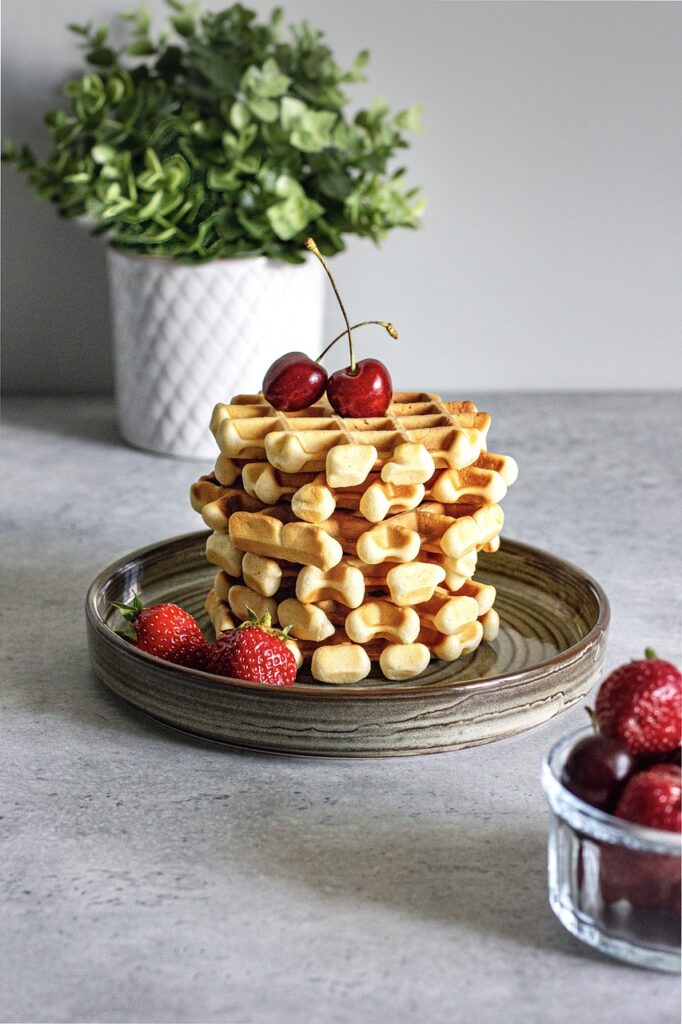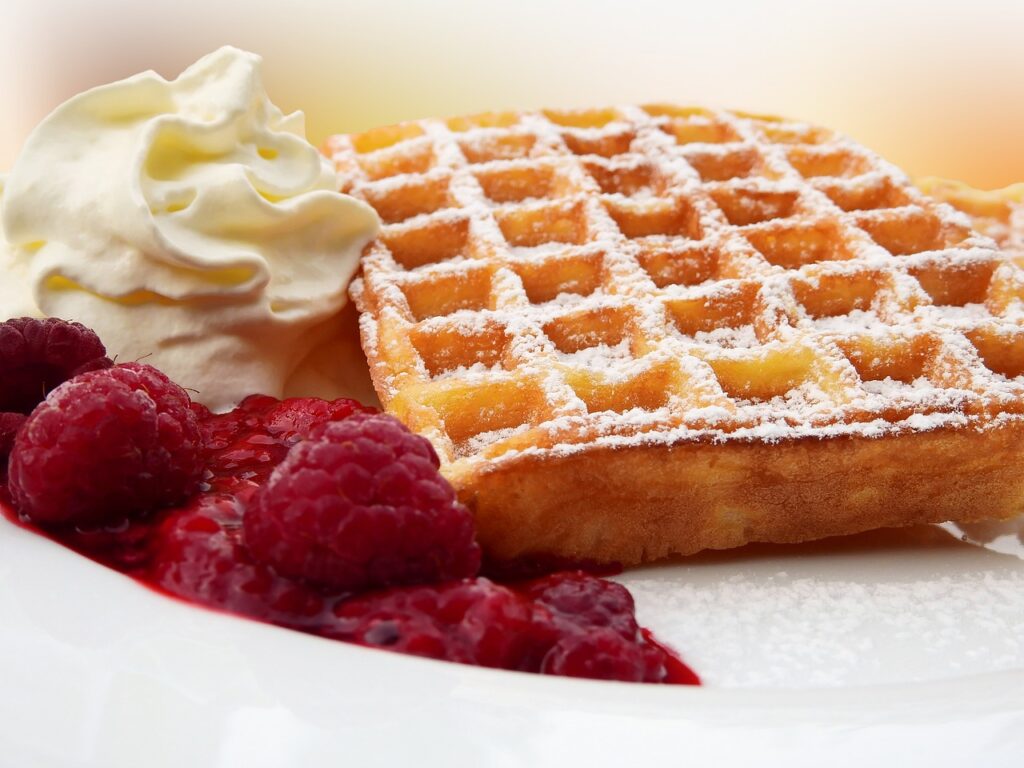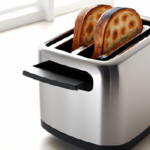
Craving a delightful breakfast treat? Look no further than this article that explores the differences between Belgian and regular waffles and how the waffle maker can impact their delectable taste. Prepare to embark on a waffle adventure as we uncover the nuances of these beloved breakfast staples and unravel the secrets behind creating the perfect waffle, all while ensuring your taste buds are left wanting more. Get ready to savor every bite!
Ingredients
Belgian Waffles
Belgian waffles are typically made with a batter consisting of flour, eggs, sugar, butter, and milk. The addition of yeast to the batter gives them a light and airy texture. Some variations may include vanilla extract or even a hint of cinnamon for added flavor.
Regular Waffles
On the other hand, regular waffles are made with a batter similar to that of Belgian waffles, but without the yeast. The absence of yeast results in a denser texture and less airy waffle. The ingredients for regular waffles usually include flour, eggs, sugar, butter, and milk.
Preparation Method
Belgian Waffles
To prepare Belgian waffles, you need to beat the eggs, sugar, and butter together until smooth. Then, gradually add the flour and milk to the mixture while continuously whisking until well combined. Finally, allow the batter to rise by adding yeast and leaving it to rest for around an hour before pouring it into a preheated waffle iron.
Regular Waffles
In the case of regular waffles, you follow a similar preparation method. Begin by beating the eggs, sugar, and butter together until smooth. Next, add the flour and milk gradually, whisking until the batter reaches a smooth consistency. Unlike Belgian waffles, you do not need to let the batter rise, and you can immediately pour it into a preheated waffle iron.

Texture
Belgian Waffles
Belgian waffles are known for their unique texture that is both fluffy and light. This is primarily due to the addition of yeast in the batter, which aids in the formation of air pockets during the rising process. The result is a waffle that is crisp on the outside and tender on the inside, creating a delightful contrast of textures in every bite.
Regular Waffles
On the other hand, regular waffles have a denser texture compared to Belgian waffles. Without the addition of yeast, the batter does not rise as much, resulting in a more compact structure. Regular waffles may still have a slight fluffiness, but they lack the airy and delicate consistency of Belgian waffles.
Thickness
Belgian Waffles
Belgian waffles are known for their substantial thickness, making them a filling and satisfying breakfast option. Due to their height, they often have deeper pockets, perfect for holding generous amounts of toppings and syrup. The thickness of Belgian waffles results from the specific design of Belgian waffle makers, which has deeper molds compared to regular waffle makers.
Regular Waffles
Regular waffles, while still thick, are generally not as substantial as their Belgian counterparts. The molds in regular waffle makers are not as deep, which leads to a slightly thinner waffle. This can also affect the ability of regular waffles to hold as many toppings as Belgian waffles.
Waffle Maker Impact
It is worth noting that the choice of waffle maker can have an impact on the thickness of both Belgian and regular waffles. Different waffle makers come with varying depths and sizes of molds, which can affect the final thickness of the waffles. Therefore, even with the same batter, waffles made in different waffle makers may have different thicknesses.

Crispiness
Belgian Waffles
Belgian waffles are often favored for their crispy exterior. The yeast in the batter helps create a golden, caramelized crust when cooked in a waffle iron. This outer layer adds a delightful crunch to complement the soft and tender interior. The combination of crispiness and fluffiness is what sets Belgian waffles apart.
Regular Waffles
Regular waffles, while still capable of achieving a crisp exterior, may not be as consistently crispy as Belgian waffles. The absence of yeast and the denser texture of regular waffles can result in a softer crust. However, regular waffles can still be crispy if cooked for a longer time or under higher heat.
Waffle Maker Impact
The type of waffle maker used can also play a role in the crispiness of both Belgian and regular waffles. Waffle makers with a non-stick surface or adjustable temperature settings may provide better control over the desired level of crispiness. Experimenting with different waffle makers and settings can help achieve the perfect balance of crispiness.
Appearance
Belgian Waffles
Belgian waffles have a distinct appearance that sets them apart from regular waffles. Their height and thickness make them visually appealing and inviting. The deep pockets in Belgian waffles also create a beautiful pattern that enhances their overall presentation. The combination of a golden brown exterior and a fluffy interior makes Belgian waffles a treat for both the eyes and the taste buds.
Regular Waffles
Regular waffles, while still attractive, lack the distinctive appearance of Belgian waffles. Their thinner profile and shallower pockets result in a flatter and less visually striking waffle. However, the simplicity of regular waffles can also be appreciated, especially if the focus is on the flavors and accompaniments.

Taste
Belgian Waffles
The taste of Belgian waffles is often described as slightly sweet with a hint of vanilla, thanks to the addition of sugar and vanilla extract in the batter. The airy and light texture of Belgian waffles allows the flavors to shine through, resulting in a delightful combination of sweetness and a subtle tanginess from the yeast. Belgian waffles are often enjoyed with a dusting of powdered sugar, a drizzle of maple syrup, or even fresh fruits and whipped cream.
Regular Waffles
Regular waffles, like Belgian waffles, have a mildly sweet taste due to the presence of sugar in the batter. However, without the addition of yeast, regular waffles may lack the subtle tanginess found in Belgian waffles. Nonetheless, regular waffles are versatile and can be paired with a variety of toppings such as butter, syrup, fruit compotes, and even savory options like fried chicken.
Accompaniments
Belgian Waffles
Belgian waffles are incredibly versatile when it comes to accompaniments. They can be served with a wide range of toppings, including sweet options such as fresh berries, whipped cream, chocolate sauce, or even a drizzle of caramel. Additionally, savory accompaniments like bacon, eggs, or even fried chicken can be paired with Belgian waffles to create a unique and satisfying meal.
Regular Waffles
Similar to Belgian waffles, regular waffles can also be enjoyed with a variety of accompaniments. Classic choices include butter, syrup, or fruit preserves. For those who prefer a savory twist, regular waffles can be topped with eggs, bacon, or cheese for a satisfying breakfast or brunch experience.
Popularity
Belgian Waffles
Over the years, Belgian waffles have gained significant popularity worldwide. Their unique texture, thickness, and ability to be paired with a variety of sweet and savory toppings have made them a beloved breakfast or brunch option. Belgian waffles are often associated with indulgence and are commonly found in cafes, restaurants, and food stalls offering a delectable breakfast or dessert experience.
Regular Waffles
While Belgian waffles may have stolen the spotlight, regular waffles still hold a special place in the hearts of waffle enthusiasts. Regular waffles are often associated with nostalgia and simplicity, reminding many of home-cooked breakfasts and cherished family traditions. They remain a popular choice for those seeking a comforting and familiar waffle experience.
Conclusion
In conclusion, there are several key differences between Belgian and regular waffles. Belgian waffles are known for their fluffiness, substantial thickness, and crispy exterior, thanks to the addition of yeast in the batter. Regular waffles, on the other hand, have a denser texture and are slightly less substantial. The choice of waffle maker can also impact the texture and crispiness of both types of waffles.
Belgian waffles have a more visually striking appearance, with their height, thickness, and deep pockets. In terms of taste, Belgian waffles are subtly sweet and slightly tangy due to the addition of yeast. Meanwhile, regular waffles have a simpler taste profile but are still enjoyable when paired with various accompaniments.
While Belgian waffles have gained widespread popularity, regular waffles continue to be cherished for their nostalgic appeal. Whether you prefer the indulgent and airy experience of Belgian waffles or the comforting simplicity of regular waffles, both options offer a delightful and satisfying breakfast or brunch treat.






